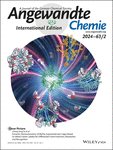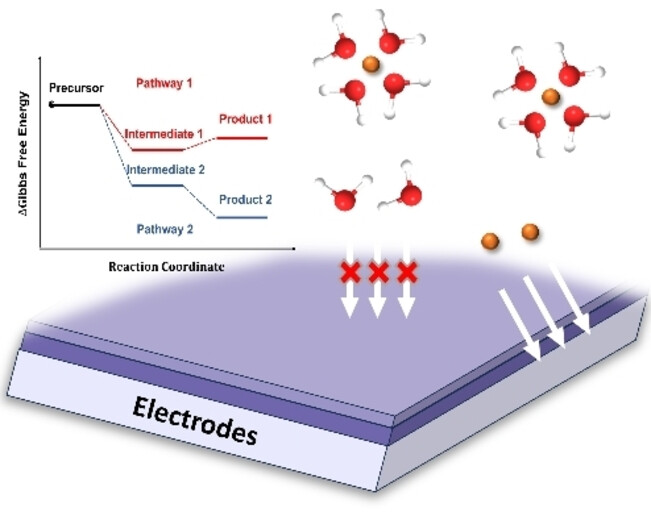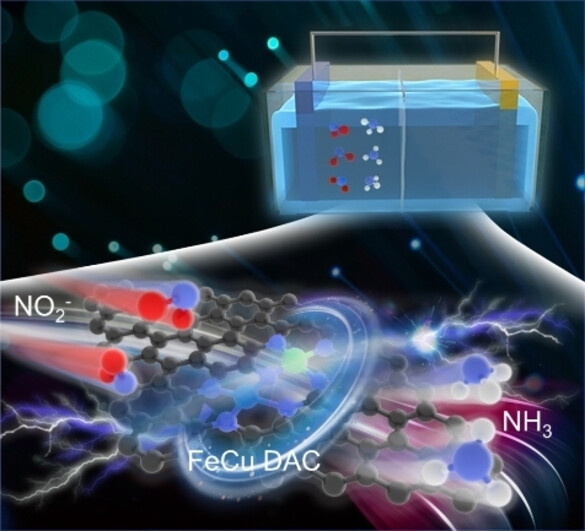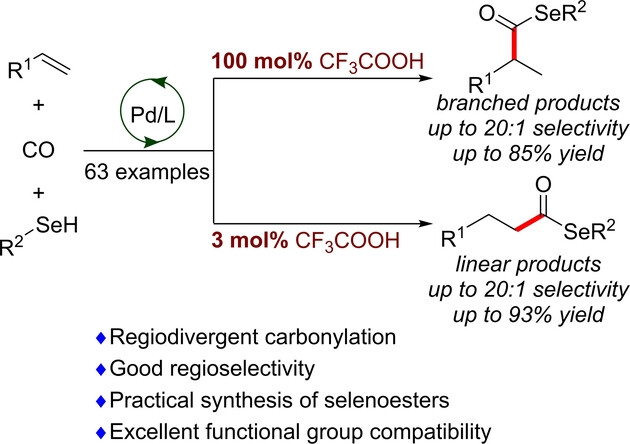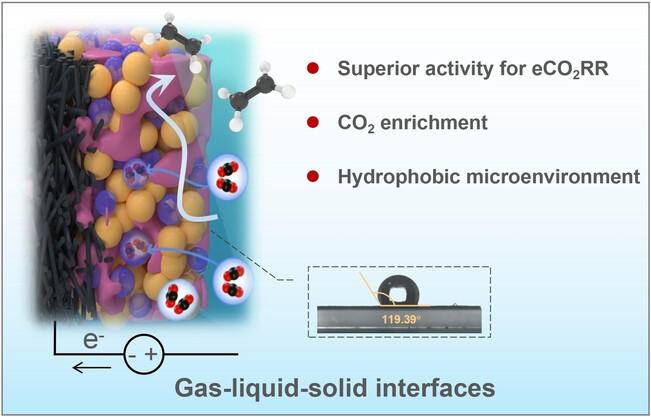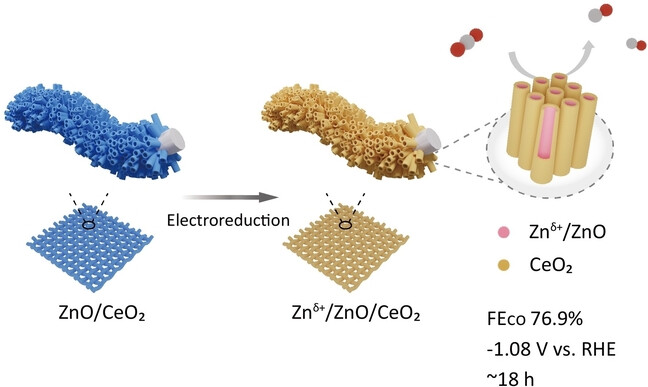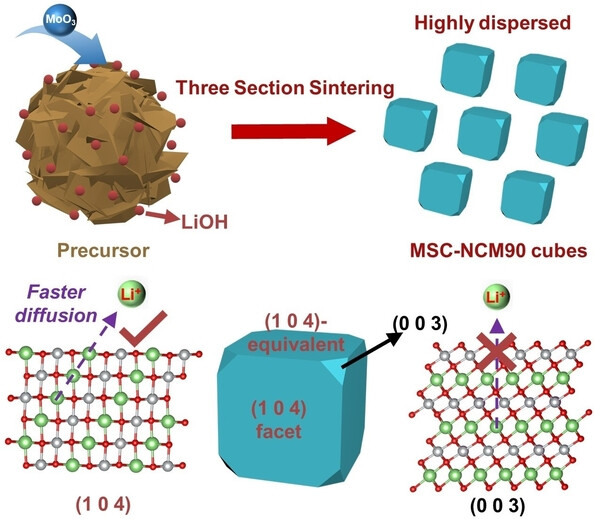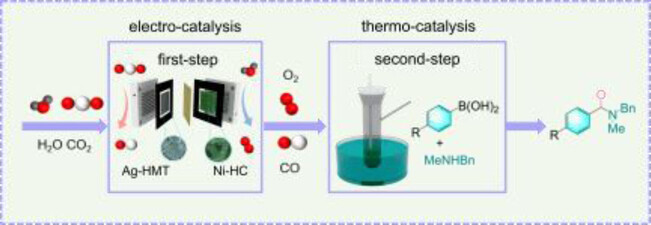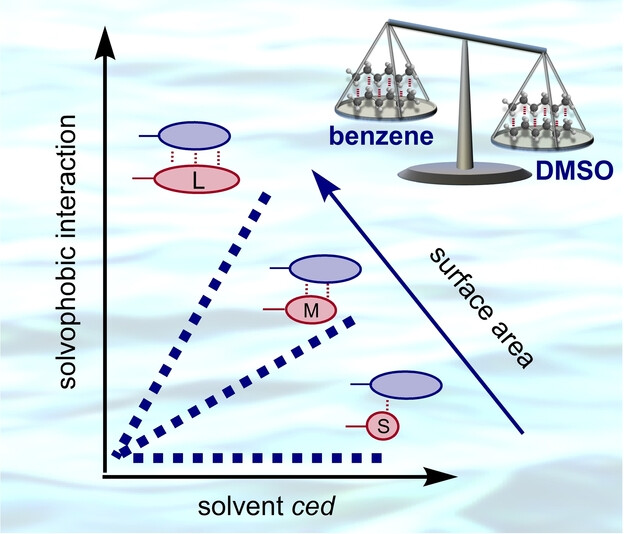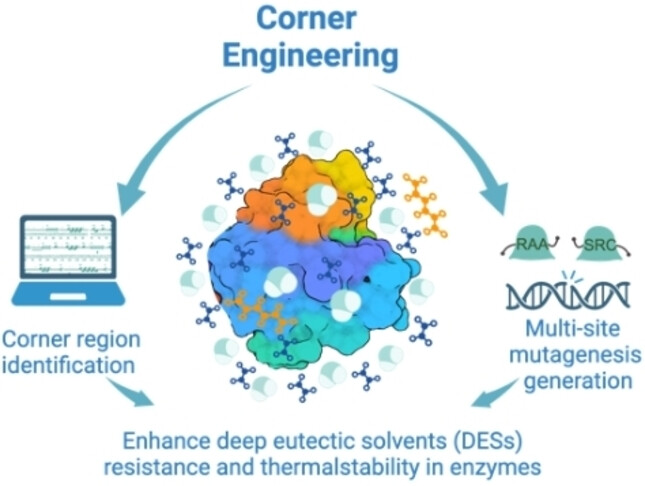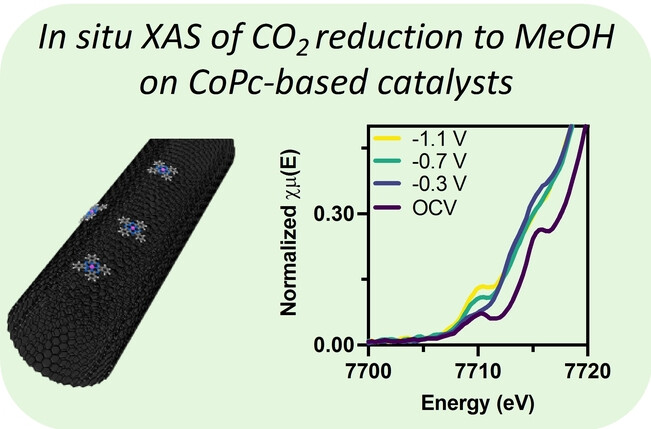Journal list menu
Export Citations
Download PDFs
Covers
Cover Picture: Dynamic Stereochemistry of M8Pd6 Supramolecular Cages Based on Metal-Center Lability for Differential Chiral Induction, Resolution, and Recognition (Angew. Chem. Int. Ed. 2/2024)
- First Published: 07 December 2023
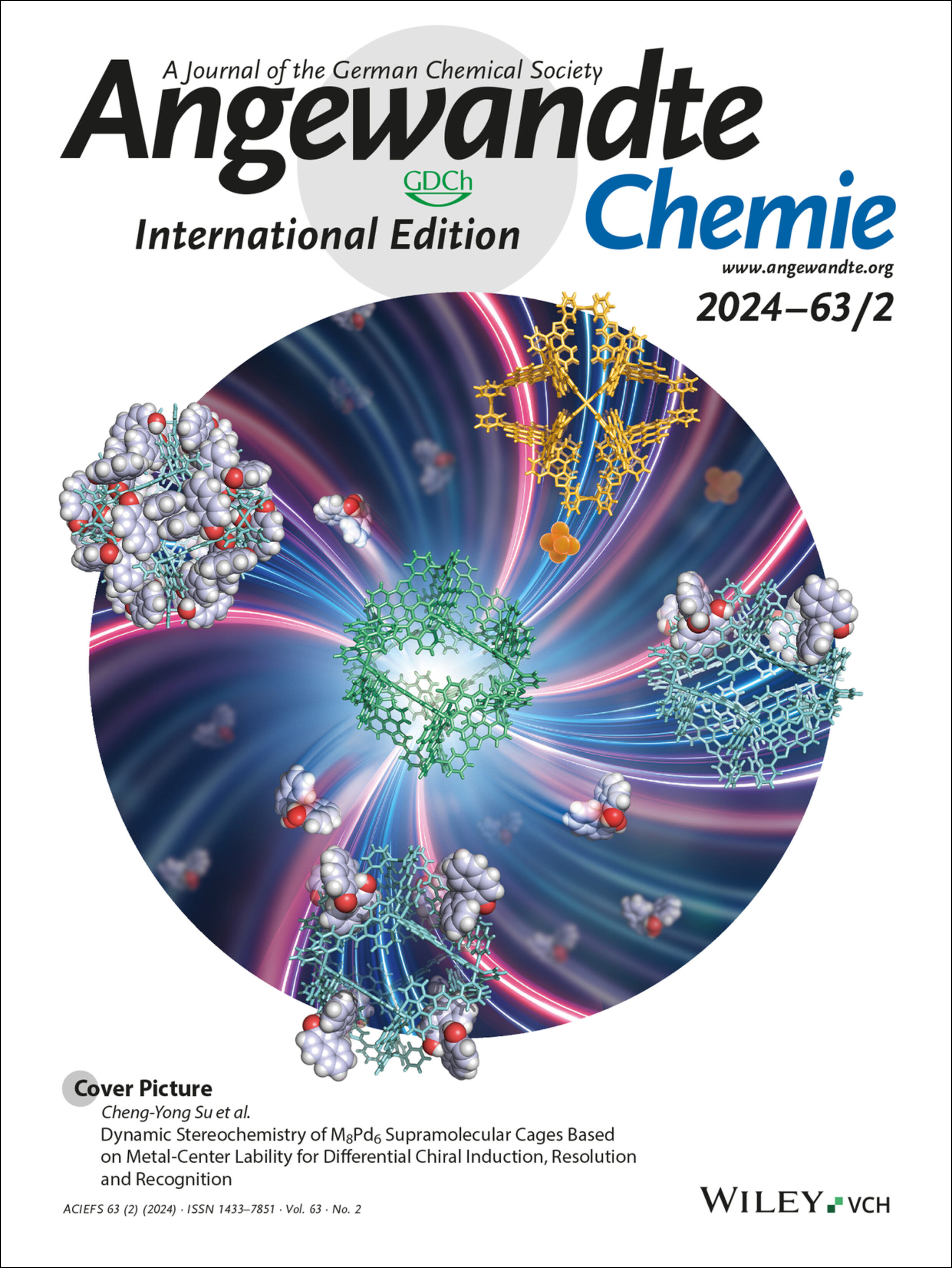
A fruitful stereochemical scenario of metal-organic cages (MOCs) is demonstrated by Cheng-Yong Su et al. in their Research Article (e202315053). Based on the intrinsic dynamics of different metal ions, it is shown how the dynamic stereochemistry of the cages is correlated with the coordination lability of the metal centers, and how their chiral induction, resolution and recognition behaviors can be maneuvered through multiple guest interactions, which may enable rational design, control and application of chiral-MOC containers.
Inside Cover: A reversible water-based electrostatic adhesive (Angew. Chem. Int. Ed. 2/2024)
- First Published: 07 December 2023
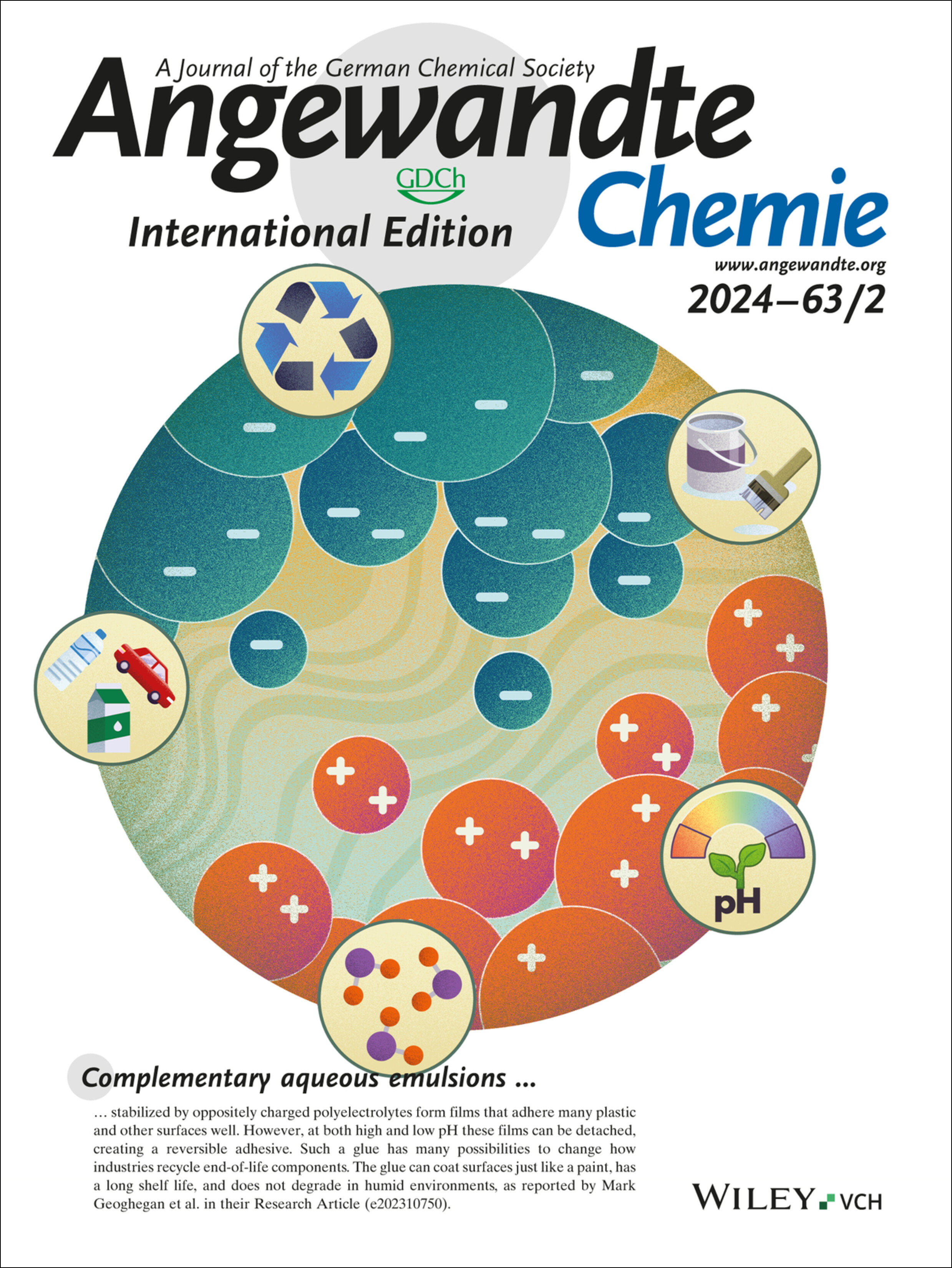
Complementary aqueous emulsions stabilized by oppositely charged polyelectrolytes form films that adhere many plastic and other surfaces well. However, at both high and low pH these films can be detached, creating a reversible adhesive. Such a glue has many possibilities to change how industries recycle end-of-life components. The glue can coat surfaces just like a paint, has a long shelf life, and does not degrade in humid environments, as reported by Mark Geoghegan et al. in their Research Article (e202310750).
Inside Back Cover: Dual Catalysis of Gold Nanoclusters: Photocatalytic Cross-Dehydrogenative Coupling by Cooperation of Superatomic Core and Molecularly Modified Staples (Angew. Chem. Int. Ed. 2/2024)
- First Published: 20 December 2023
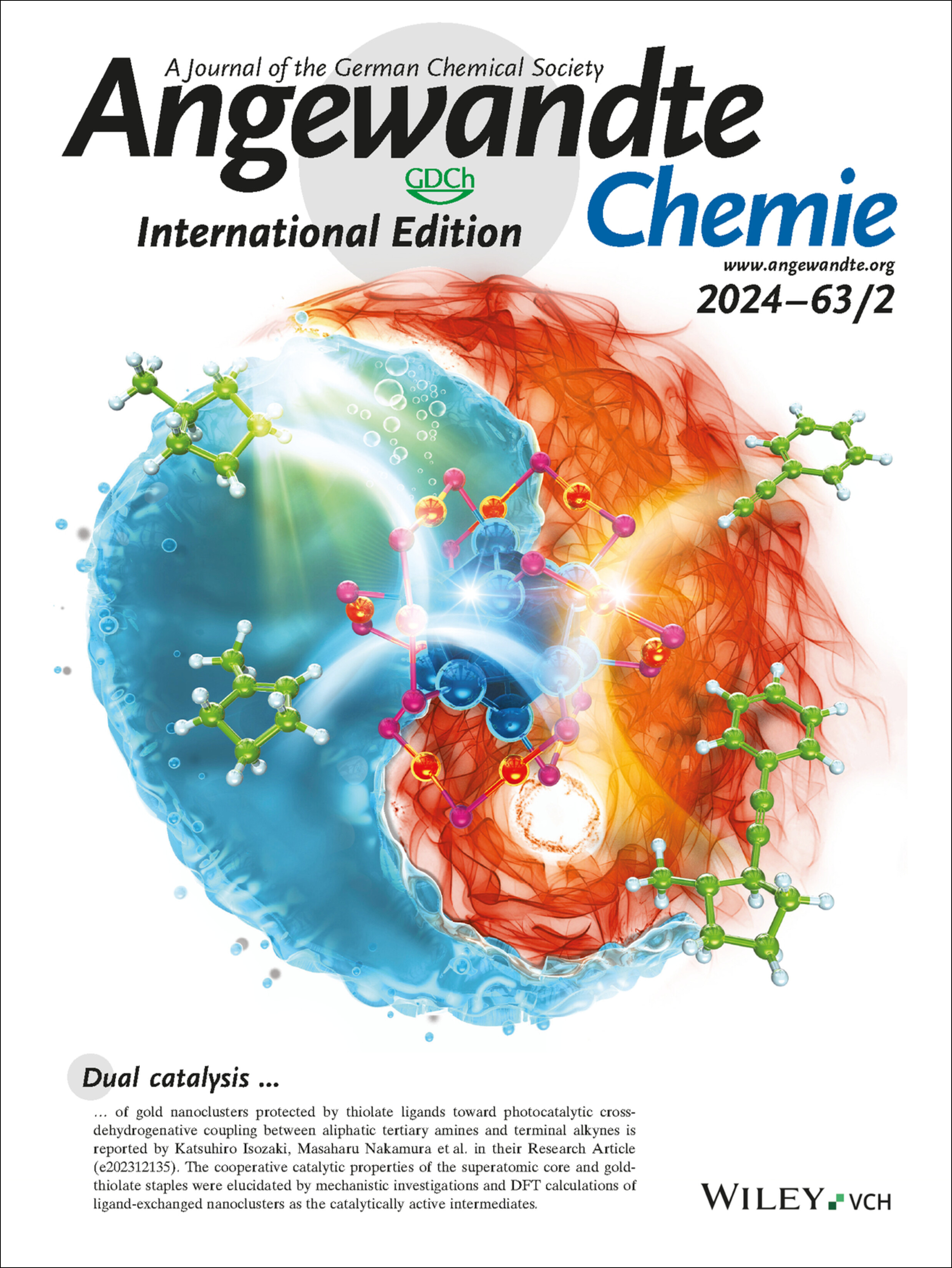
Dual catalysis of gold nanoclusters protected by thiolate ligands toward photocatalytic cross-dehydrogenative coupling between aliphatic tertiary amines and terminal alkynes is reported by Katsuhiro Isozaki, Masaharu Nakamura et al. in their Research Article (e202312135). The cooperative catalytic properties of the superatomic core and gold-thiolate staples were elucidated by mechanistic investigations and DFT calculations of ligand-exchanged nanoclusters as the catalytically active intermediates.
Back Cover: Exploration of Chemical Diversity in Intercellular Quorum Sensing Signalling Systems in Prokaryotes (Angew. Chem. Int. Ed. 2/2024)
- First Published: 23 November 2023
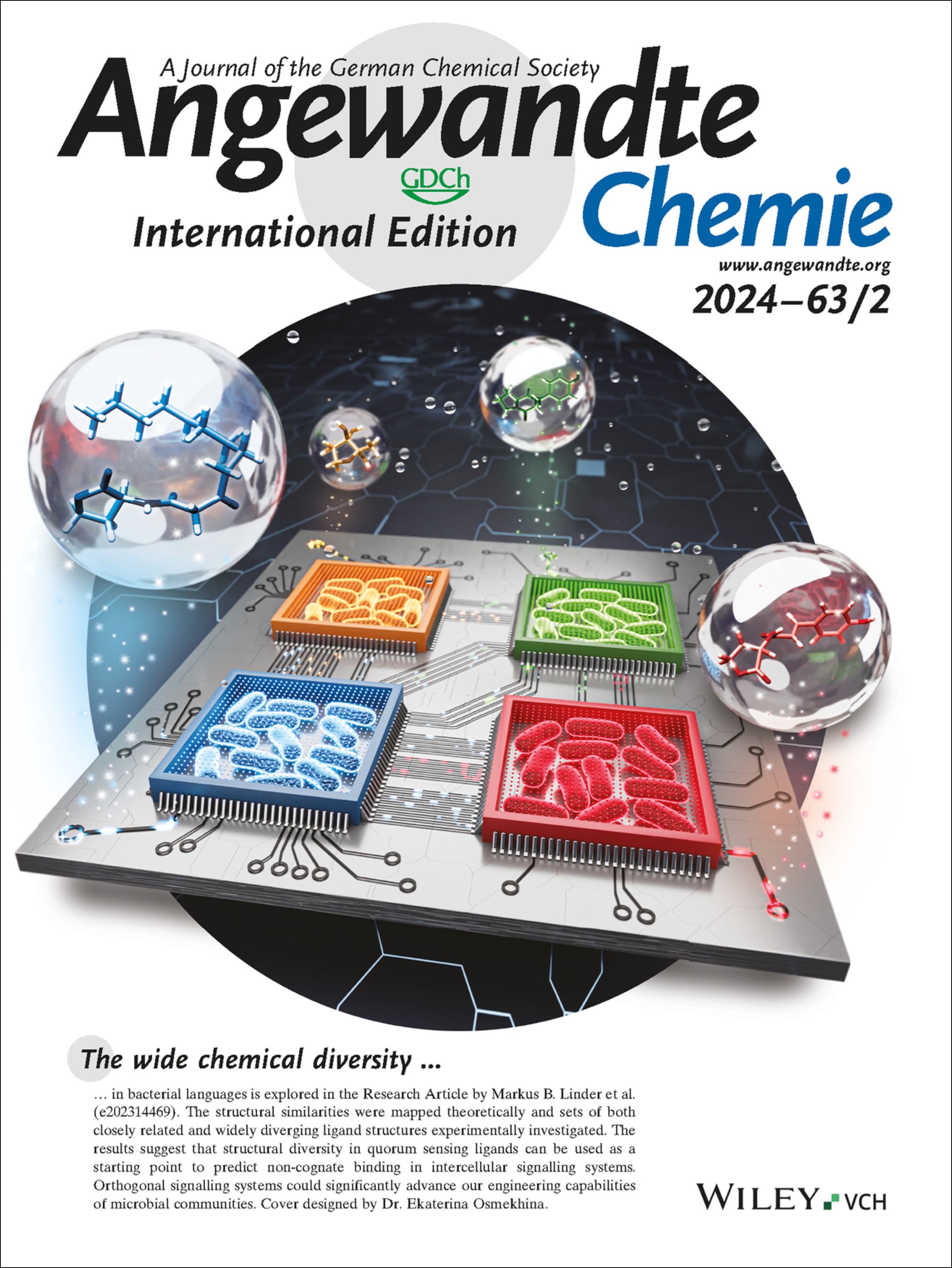
The wide chemical diversity in bacterial languages is explored in the Research Article by Markus B. Linder et al. (e202314469). The structural similarities were mapped theoretically and sets of both closely related and widely diverging ligand structures experimentally investigated. The results suggest that structural diversity in quorum sensing ligands can be used as a starting point to predict non-cognate binding in intercellular signalling systems. Orthogonal signalling systems could significantly advance our engineering capabilities of microbial communities. Cover designed by Dr. Ekaterina Osmekhina.
Frontispiece
Frontispiece: Unusual Thermal Quenching of Photoluminescence from an Organic–Inorganic Hybrid [MnBr4]2−-based Halide Mediated by Crystalline–Crystalline Phase Transition
- First Published: 04 January 2024
![Frontispiece: Unusual Thermal Quenching of Photoluminescence from an Organic–Inorganic Hybrid [MnBr4]2−-based Halide Mediated by Crystalline–Crystalline Phase Transition Volume 63 Issue 2, 2024](/cms/asset/7f1fc15a-5eea-4015-bbf5-a46c7c11c2a6/anie202480261-toc-0001-m.jpg)
Fluorescent Materials. In their Communication (e202313590), Yi Zhang, Yujian Zhang, Da-Wei Fu et al. report the unusual thermal quenching of photoluminescence in an organic-inorganic [MnBr4]2−-based halide mediated by crystalline–crystalline phase transition.
Graphical Abstract
Announcement
Classifieds: Jobs and Awards, Products and Services
- First Published: 04 January 2024
Introducing …
Lisa Olshansky
- First Published: 06 December 2023

“The most important factor in the choice of my current research topic was realizing that all my favorite metalloenzymes are conformationally gated… I advise my students to figure out what they as an individual need in order to be productive and healthy during their PhD.” Find out more about Lisa Olshansky in her Introducing… Profile.
Minireviews
Organic Electronics
Aldol Condensation for the Construction of Organic Functional Materials
- First Published: 15 September 2023
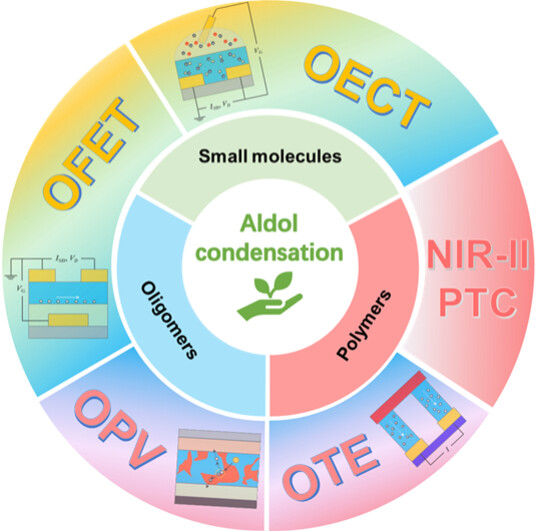
Aldol-condensation-derived organic functional materials have exerted a profound influence on n-type organic field-effect transistors (OFETs), organic electrochemical transistors (OECTs), organic photovoltaics (OPVs), organic thermoelectrics (OTEs), and NIR-II photothermal conversion. This all-encompassing Review highlights the recent decade's developments, charting the course for progress in this growing and multidisciplinary domain.
Electrolyte Interphases
Subunit Vaccines
DNA Nanostructures: Self-Adjuvant Carriers for Highly Efficient Subunit Vaccines
- First Published: 22 September 2023
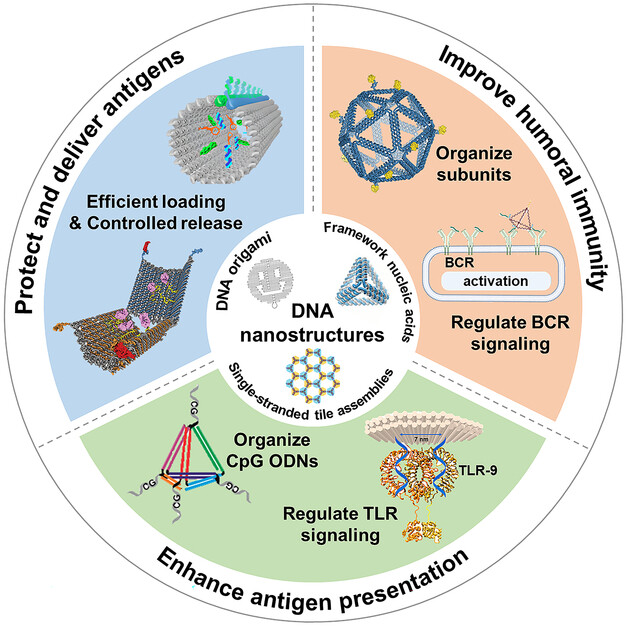
In this minireview, we provide a concise overview of the unique properties exhibited by DNA nanostructures. Then we delve into the principles behind using DNA nanostructures as self-adjuvant carriers and review the latest advancements in efficient subunit vaccines construction, and propose potential directions for future development in this field.
Reviews
Single Molecule Magnets
Increasing the Magnetic Blocking Temperature of Single-Molecule Magnets
- First Published: 04 August 2023
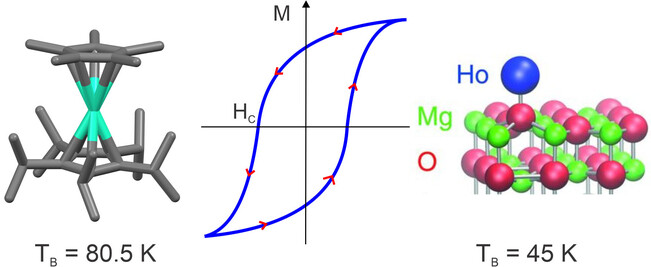
Despite three decades of intensive investigation of single-molecule magnets (SMMs) there are still unexplored roads towards increasing their magnetization blocking temperature. In this Review, after short overview of key SMM compounds, the basic strategies for further enhancement of SMM performance for mononuclear and polynuclear complexes are presented.
Bioimaging
Recent Advances in the Development of Non-Invasive Imaging Probes for Cancer Immunotherapy
- First Published: 16 October 2023
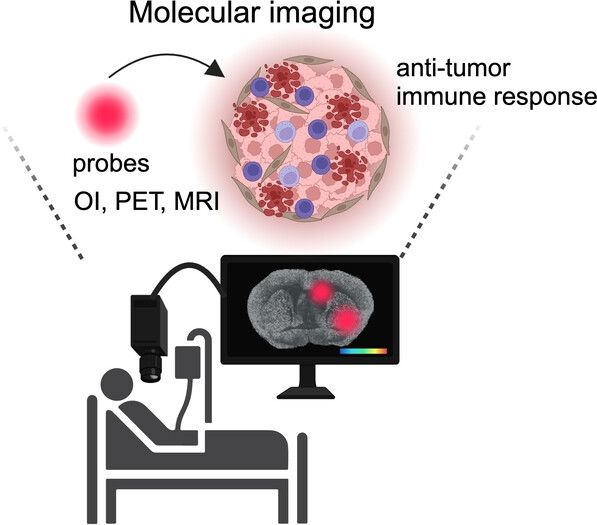
Molecular imaging is a rapidly growing platform for studying molecular and cellular events in living organisms. This review highlights recent advances in the chemical design of molecular probes with various imaging modalities such as PET, MRI, and optical imaging for early, real-time assessment of immune responses and prediction of therapeutic outcome in cancer immunotherapy by detecting expression and functional states of specific targets.
Research Articles
C-H Functionalization
Combinatorial Ligand Assisted Simultaneous Control of Axial and Central Chirality in Highly Stereoselective C−H Allylation
- First Published: 23 November 2023
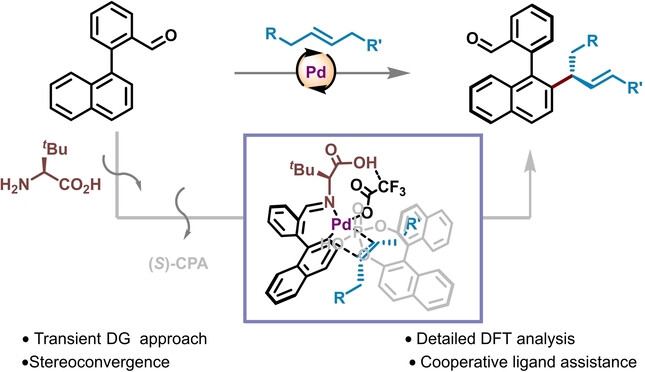
The aim of converging multiple stereocenters in asymmetric catalysis brings exciting avenues for expanding the ‘chiral pool’. With this aim, a dual-cooperative ligand system was developed for controlling two distinct stereo-environment in an atropselective C−H allylation of biaryls. The system leverages a chiral amino acid as a transient-ligand source and chiral phosphoric acid for the early C−H activation step. The DFT studies present a rich mechanistic model, authenticating the extensive experimental findings.
Theranostics
Dual-Targeting Biomimetic Semiconducting Polymer Nanocomposites for Amplified Theranostics of Bone Metastasis
- First Published: 27 November 2023
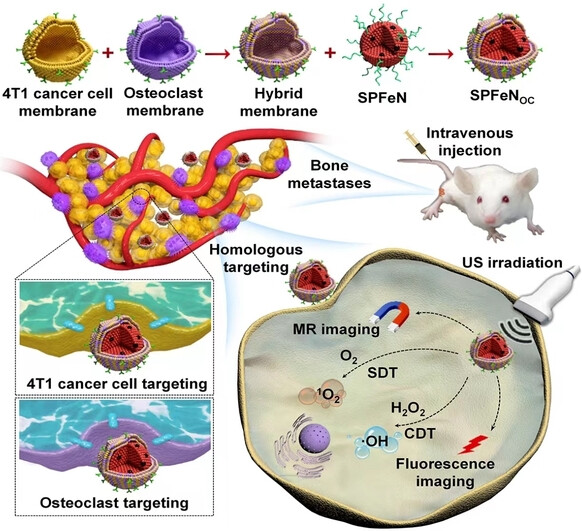
A dual-targeting biomimetic semiconducting polymer nanocomposite is developed for amplified theranostics of bone metastasis. The nanocomposite enables efficient tumor homing after dual-targeting effect towards both cancer cells and osteoclasts, and thus achieves bone metastasis diagnosis and effective inhibition of tumor growth via mediating dual-model imaging at bone metastasis sites and a combined therapy against cancer cells and osteoclasts.
Polymers | Hot Paper
A reversible water-based electrostatic adhesive
- First Published: 29 October 2023
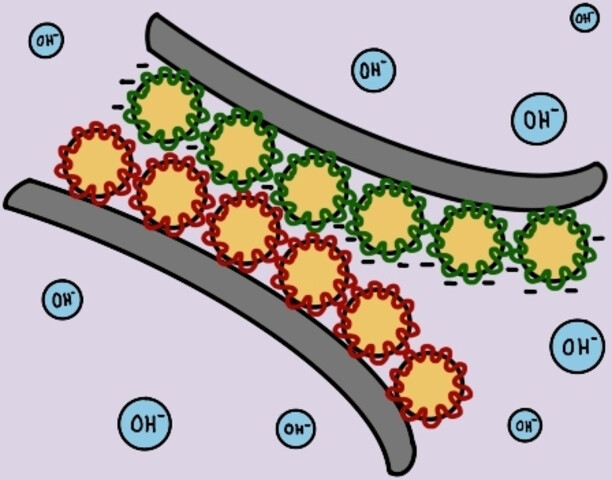
A reversible water-based electrostatic adhesive has been developed through conventional emulsion polymerization using commodity materials. It is made of two formulations, one containing a polycation, and other a polyanion. Detachment is only promoted in highly acidic or alkaline solutions as polyelectrolytes show distinctive charged states. This kind of adhesive would be useful for the recycling and dismantling of products.
Sensing
DNA-Barcoded Plasmonic Nanostructures for Activity-Based Protease Sensing
- First Published: 20 November 2023

We report a new class of activity-based protease sensors, termed DNA-barcoded plasmonic nanostructures. These probes afford over 100-fold increase in sensitivity compared to conventional fluorophore-quencher-based probes, allow for multiplexed detection of disease-relevant proteases, and enable the monitoring of active proteases in cancer cells obtained from colorectal cancer patients.
Halogen Exchange
Electrochemically Driven Nickel-Catalyzed Halogenation of Unsaturated Halide and Triflate Derivatives
- First Published: 06 November 2023

Joint experimental and theoretical techniques highlighted three main catalytic events in an electrochemically driven nickel-catalyzed halogen exchange reaction of aryl halides: Oxidative addition of Ar−X to a Ni(0) species first delivers a Ni(II)ArX, which undergoes salt metathesis with chloride to afford Ni(II)ArCl. The latter is electrochemically oxidized to a Ni(III) species, enabling the formation of the product upon reductive elimination.
Electrochemical N2 Reduction
Extending Ring-Chain Coupling Empirical Law to Lithium-Mediated Electrochemical Ammonia Synthesis
- First Published: 27 November 2023
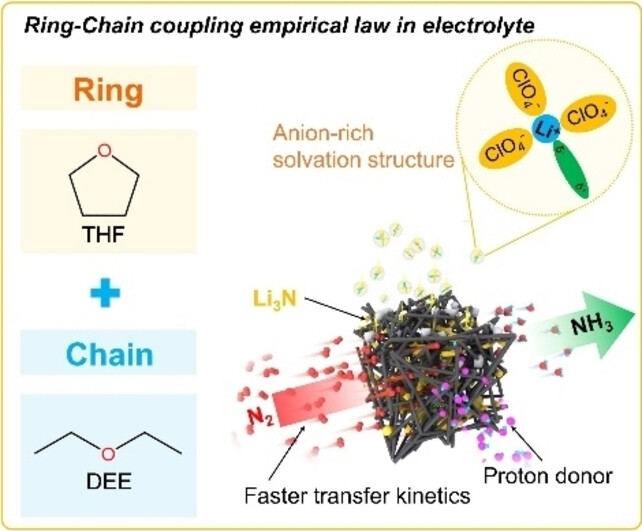
This work extends an interesting empirical electrolyte design law (ring-chain coupling law) to the lithium-mediated ammonia electrochemical synthesis system, which succeeds in improving the nitrogen fixation performance. Systematic theoretical calculation and experimental evidence jointly decipher the potential correlation between such strategy and enhanced performance from the angle of thermodynamics and mass transfer dynamics.
Block Copolymers
Determination of Reaction Kinetics by Time-Resolved Small-Angle X-ray Scattering during Polymerization-Induced Self-Assembly: Direct Evidence for Monomer-Swollen Nanoparticles
- First Published: 23 November 2023
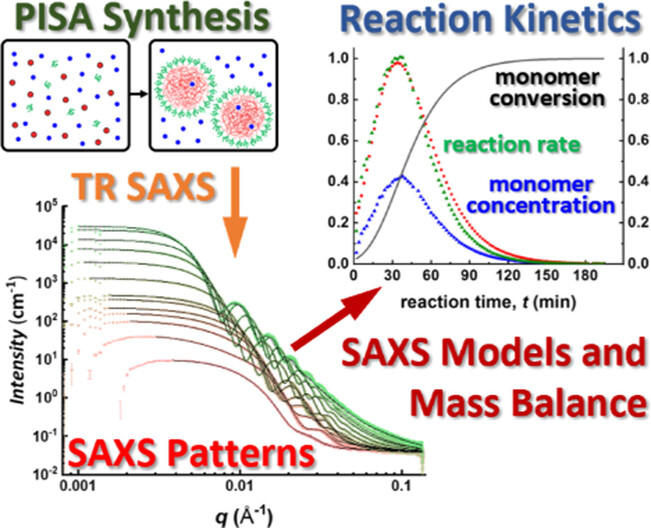
A generic SAXS model for polymerization-induced self-assembly (PISA) formulations has been developed by applying the law of conservation of mass. Time-resolved small-angle X-ray scattering (SAXS) data are analyzed to determine the kinetics of polymerization directly during the synthesis of spherical nanoparticles. This new analytical approach enables calculation of the mass transport of monomer and solvent in and out of the growing nanoparticles.
Fluorescent Probes
A Class of Activatable NIR-II Photoacoustic Dyes for High-Contrast Bioimaging
- First Published: 17 October 2023
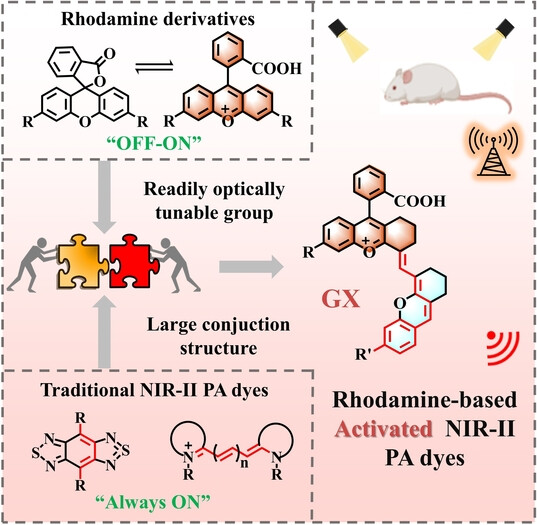
A novel class of GX fluorophores have been designed and synthesized as activatable NIR-II PA dyes, in which the absorption/emission wavelength of GX-5 extends up to 1082/1360 nm. Furthermore, to demonstrate the applicability of GX dyes, the first NIR-II probe GX-5-CO activated by CO was engineered and employed to reveal the enhancement of the CO levels in hypertensive mice by high-contrast NIR-II PA and FL imaging.
Cluster Catalysis | Hot Paper
Dual Catalysis of Gold Nanoclusters: Photocatalytic Cross-Dehydrogenative Coupling by Cooperation of Superatomic Core and Molecularly Modified Staples
- First Published: 05 November 2023

Gold nanoclusters were found to show a dual catalysis toward photocatalytic cross-dehydrogenative coupling reactions between aliphatic tertiary amines and terminal alkynes to produce propargylamine products. The dual catalysis was enabled by the cooperation of the superatomic core and staple moieties for the photooxidation of amines and the carbon-carbon bond formation.
Ligand Design
Ligand-Promoted Iron-Catalyzed Nitrene Transfer for the Synthesis of Hydrazines and Triazanes through N-Amidation of Arylamines
- First Published: 23 November 2023

Bulky alkylphosphines (PtBu3) can switch the roles from actor to spectator ligands to promote the FeCl2-catalyzed N-amidation reaction of arylamines with dioxazolones leading to hydrazides in high efficiency and chemoselectivity. The new ligand-promoted N-amidation protocols offer a convenient way to access various challenging triazane compounds via double or sequential N-amidation of primary arylamines.
Mg–CO2 Batteries
Boosted Mg−CO2 Batteries by Amine-Mediated CO2 Capture Chemistry and Mg2+-Conducting Solid-electrolyte Interphases
- First Published: 20 November 2023

A non-aqueous Mg−CO2 battery with high reversibility and enhanced kinetics is utilized using an amine molecular mediator that tunes the CO2 reduction pathways as well as the Mg anode. It not only modifies the reactant state of CO2 and Mg2+ to promote CO2 cathodic reaction kinetics but also facilitates Mg2+-conducting interphase formation to enable the reversible cycling of Mg anode.
Electrochemistry
Nitrogen-bridged Fe-Cu Atomic Pair Sites for Efficient Electrochemical Ammonia Production and Electricity Generation with Zn-NO2 Batteries
- First Published: 23 November 2023
Carbonylation
Regiodivergent Carbonylation of Alkenes: Selective Palladium-Catalyzed Synthesis of Linear and Branched Selenoesters
- First Published: 21 November 2023
CO2 Electroreduction | Hot Paper
Polymer Modification Strategy to Modulate Reaction Microenvironment for Enhanced CO2 Electroreduction to Ethylene
- First Published: 28 November 2023
Bioimaging
π–π Interaction-Induced Organic Long-wavelength Room-Temperature Phosphorescence for In Vivo Atherosclerotic Plaque Imaging
- First Published: 07 December 2023
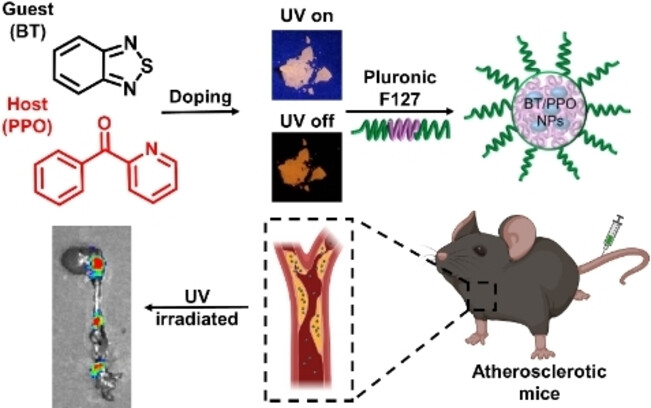
In this study, benzo[c][1,2,5] thiadiazole/phenyl(pyridin-2-yl)methanone (BT/PPO)-doped long-wavelength (600 nm) room-temperature phosphorescent (RTP) material has been synthesized. The BT/PPO nanoparticles exhibit long-wavelength afterglow luminescence of 120 s, with a maximum penetration depth of 10 mm. Additionally, the potential of BT/PPO nanoparticles for detecting atherosclerotic plaques has been demonstrated.
Glycosylation
Stereocontrolled Synthesis of α-3-Deoxy-d-manno-oct-2-ulosonic Acid (α-Kdo) Glycosides Using C3-p-Tolylthio-Substituted Kdo Donors: Access to Highly Branched Kdo Oligosaccharides
- First Published: 28 November 2023

A modified donor has been developed for the glycosylation of 3-deoxy-d-manno-2-octulosonic acid (Kdo). The high reactivity and wide substrate scope of the donor enabled the synthesis of a range of Kdo-containing glycosides with complete α-stereoselectivity without the formation of 2,3-ene by-products. Several natural oligosaccharides were synthesized by a stepwise or one-pot process, including a highly branched Kdo pentasaccharide.
Electrochemical CO2 Reduction
Stabilizing Undercoordinated Zn Active Sites through Confinement in CeO2 Nanotubes for Efficient Electrochemical CO2 Reduction
- First Published: 07 December 2023
Na-ion Batteries
A Dual Anion Chemistry-Based Superionic Glass Enabling Long-Cycling All-Solid-State Sodium-Ion Batteries
- First Published: 27 November 2023
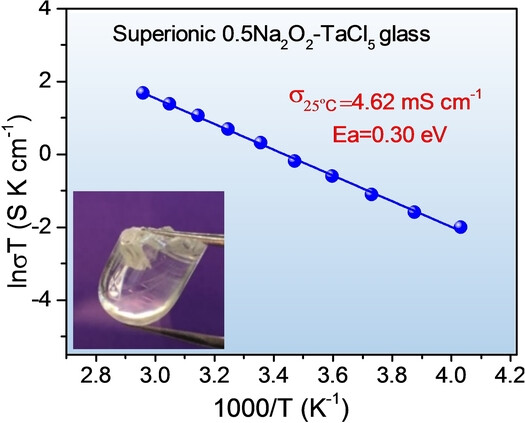
A new sodium superionic conducting glass, 0.5Na2O2-TaCl5, based on an oxychloride anionic lattice is developed for all-solid-state sodium-ion batteries. The appealing features of ultrahigh ionic conductivity (4.6 mS cm−1), good formability, and high oxidative stability (≈3.92 V) of 0.5Na2O2-TaCl5 contribute to the superior cycling stability of all-solid-state sodium-ion batteries at room temperature.
H2O2 Electrosynthesis
High-efficiency Electroreduction of O2 into H2O2 over ZnCo Bimetallic Triazole Frameworks Promoted by Ligand Activation
- First Published: 08 November 2023
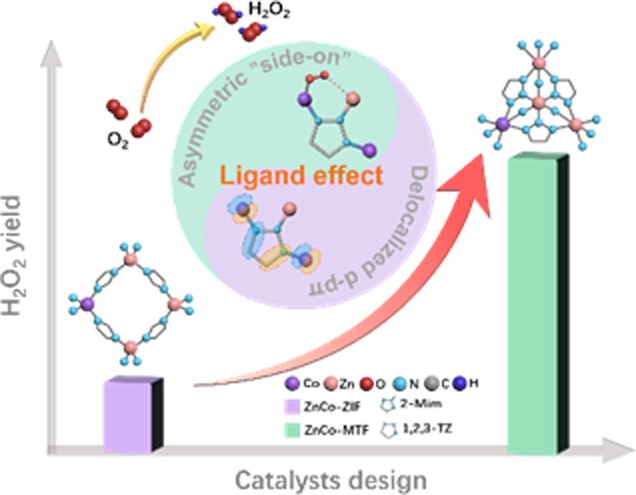
A ZnCo bimetal-triazole framework has been developed as high-efficiency 2e− ORR electrocatalysts. The unique ligand effect of 1,2,3-triazole optimizes the electronic structure of Co sites and enables an asymmetric “side-on” adsorption mode of O2 molecule, resulting in an excellent 2e− ORR performance with a selectivity of ≈100 % and an H2O2 production rate of 5.55 mol gcat−1 h−1.
Heterocycles
Construction of Bridged Benzazepines via Photo-Induced Dearomatization
- First Published: 27 November 2023

A mild and efficient protocol is developed to convert simple aromatic substrates into value-added and structurally complex bridged benzazepines via a photocatalytic dearomatization. The switchable diastereoselectivity could be furnished by the manipulation of base-promoted or photoinduced intramolecular hydroamination.
Single-Atom Catalysts
Defects-Induced Single-Atom Anchoring on Metal–Organic Frameworks for High-Efficiency Photocatalytic Nitrogen Reduction
- First Published: 15 November 2023
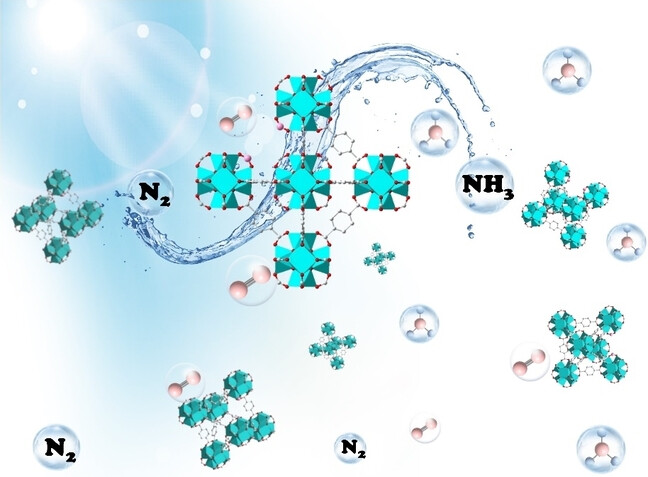
A photochemical strategy was applied to fabricate the defects on MOFs. And the defects further induced the anchoring of Ru single atoms. The photocatalytic activity in N2 reduction to produce ammonia has been greatly improved to 53.28 μmol g−1 h−1 on Ru1/d-UiO-66 with an apparent quantum efficiency of 0.34 % at 300 nm and 0.04 % at 420 nm.
Bacterial Signalling
Exploration of Chemical Diversity in Intercellular Quorum Sensing Signalling Systems in Prokaryotes
- First Published: 25 October 2023
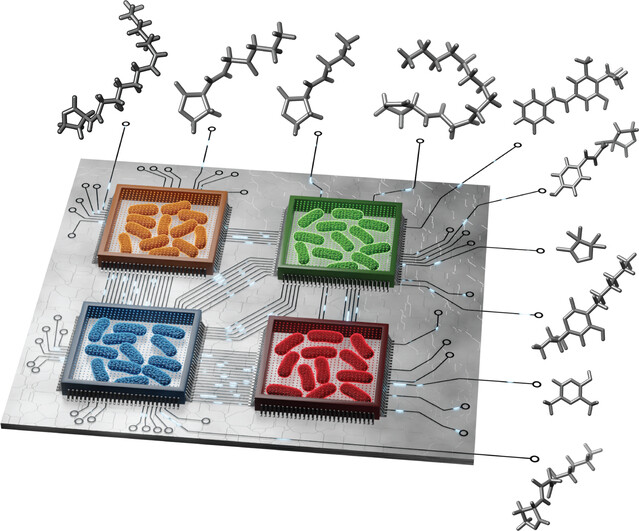
In this manuscript, we investigate sets of both closely related and widely diverging quorum sensing (QS) ligand structures to identify orthogonal signalling systems. Our results suggest that structural diversity in QS ligands can be used as a starting point to predict non-cognate receptor-ligand binding in intercellular signalling systems.
Li-ion Batteries
Grain-growth Inhibitor with Three-section-sintering for Highly Dispersed Single-crystal NCM90 Cubes
- First Published: 27 November 2023
Polymer Chemistry | Hot Paper
Organocatalyzed Photo-Controlled Synthesis of Ultrahigh-Molecular-Weight Fluorinated Alternating Copolymers
- First Published: 28 November 2023

A robust organocatalyzed photo-controlled radical alternating copolymerization was established, enabling facile access to binary and ternary fluorinated copolymers with predefined ultrahigh molecular weights (UHMWs), well-defined structures and functional pendants. The UHMW fluoropolymers presented clearly improved physical properties, and furnished anticorrosive, (super)hydrophobic attributes as protective coatings on diverse substrates.
Electrocatalysis
Tandem Electro-Thermo-Catalysis for the Oxidative Aminocarbonylation of Arylboronic Acids to Amides from CO2 and Water
- First Published: 22 November 2023
Polymerization | Hot Paper
One-Pot Reversible Complexation-Mediated Polymerization (RCMP) from Benzylic Alcohols for Facile Access to Polymer-Grafted Lignin
- First Published: 27 November 2023
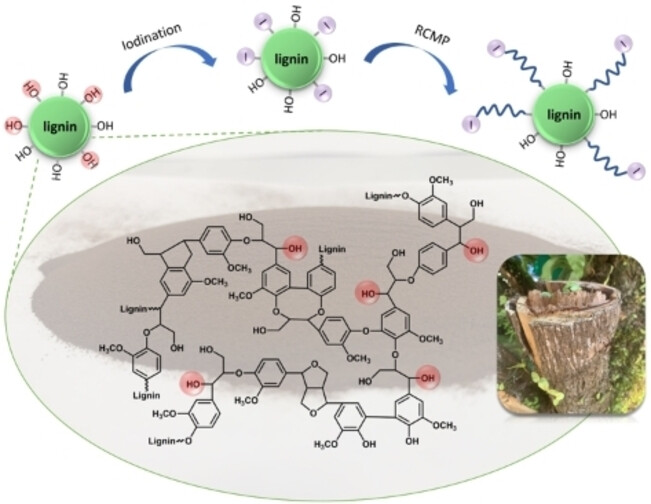
We report the first one-pot synthesis of methacrylic and acrylic polymers from benzylic alcohols (R−OH) via reversible complexation mediated polymerization (RCMP), namely organocatalyzed living radical polymerization. This method enabled direct initiation from benzylic alcohols of lignin to yield polymer-grafted lignin in one pot as a practically useful application.
Self-Assembly
Enzymatic Dimerization-Induced Self-Assembly of Alanine-Tyramine Conjugates into Versatile, Uniform, Enzyme-Loaded Organic Nanoparticles
- First Published: 22 November 2023
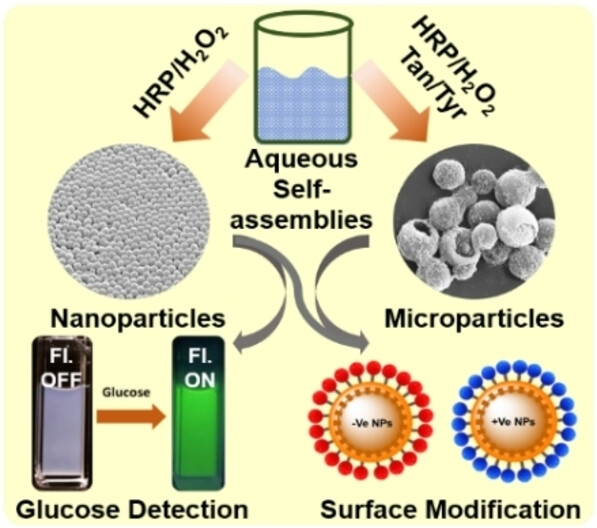
Multi-enzyme-loaded uniform hollow organic nanoparticles (NPs) can be prepared by enzymatic dimerization-induced self-assembly (e-DISA) by employing horseradish peroxidase (HRP) and short alanine-tyramine conjugates. These NPs allowed efficient detection of salivary glucose levels through s fluorimetry assay of dichlorofluorescein diacetate. Surface modification of these NPs by using different phenolic additives (tyramine/tannic acid) was also possible.
Noncovalent Interactions
Empirical Model of Solvophobic Interactions in Organic Solvents
- First Published: 30 November 2023
COFs for Photocatalysis | Very Important Paper
Turning on Singlet Oxygen Generation by Outer-Sphere Microenvironment Modulation in Porphyrinic Covalent Organic Frameworks for Photocatalytic Oxidation
- First Published: 28 November 2023
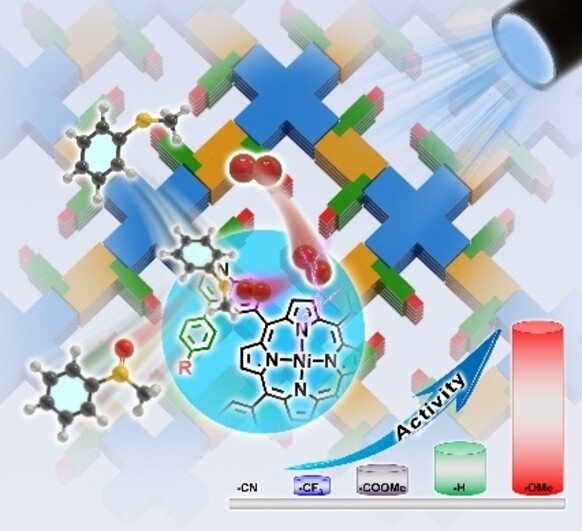
The modulation of the outer-sphere microenvironment around catalytic metal sites in covalent organic frameworks (COFs) with diverse functional groups turns on the activity of 1O2-mediated photocatalytic oxidation of thioether with the increased electron-donating ability of the groups. The yields boost from nearly zero in the cyano-functionalized COF to 98 % in the methoxy-functionalized counterpart.
Protein Engineering | Hot Paper
Corner Engineering: Tailoring Enzymes for Enhanced Resistance and Thermostability in Deep Eutectic Solvents
- First Published: 27 November 2023
Coordination Cages
Dynamic Stereochemistry of M8Pd6 Supramolecular Cages Based on Metal-Center Lability for Differential Chiral Induction, Resolution, and Recognition
- First Published: 26 October 2023
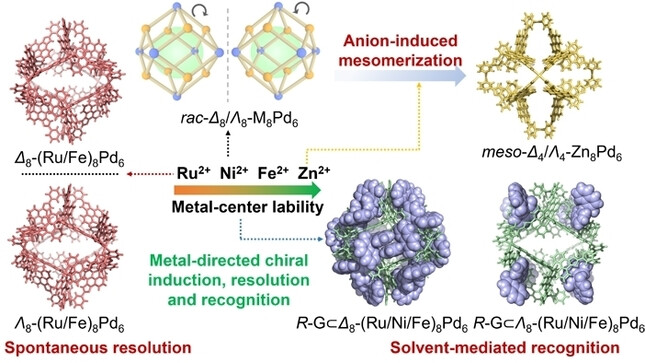
Four multi-pocket isostructural M8Pd6 supramolecular cages were assembled that display distinct metal-center lability and distinguishable stereochemical dynamics leading to chiral transitions and differential guest induction. These results offer insights for the design of chiral metal-organic cages and applications in chiral sensing and asymmetric transformation.
Photocatalysis | Hot Paper
Photocatalytic Generation of Trifluoromethyl Nitrene for Alkene Aziridination
- First Published: 11 December 2023
TADF Emitters
A Rigid Multiple Resonance Thermally Activated Delayed Fluorescence Core Toward Stable Electroluminescence and Lasing
- First Published: 22 November 2023

A promising rigid and stable multiple-resonance thermally activated delayed fluorescence lasing core CzBN was proposed. Benefitting from the enhanced molecular rigidity, photo-, thermal-stability, and effective separation of excited-state absorptions, its derivative CzBNPh demonstrated a low lasing threshold of 0.68 μJ cm−2 in distributed feedback resonators. Furthermore, CzBNPh exhibited much improved stability in electroluminescent and lasing performance.
Peptide Self-Assembly | Hot Paper
Preserving Structurally Labile Peptide Nanosheets After Molecular Functionalization of the Self-Assembling Peptides
- First Published: 27 November 2023
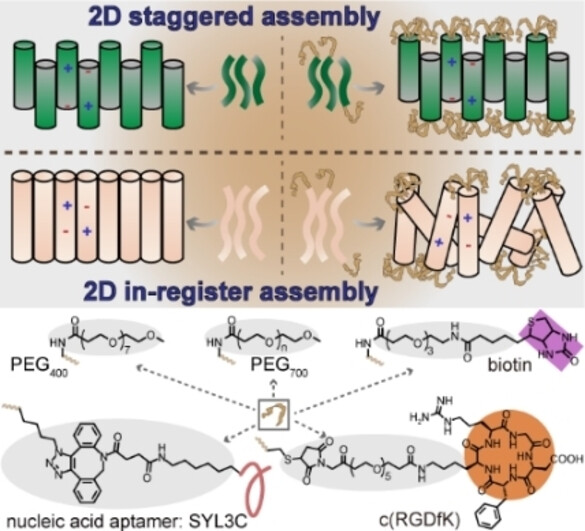
We present a unique way to preserve structurally labile nanosheets after conjugation of a variety of molecules to the self-assembling peptides. The sheet-forming peptides afford a staggered alignment for simultaneous separation of external molecules from each other and from the underlying assembly motifs. This strategy allows the functionalization of historically challenging fragile assemblies while maintaining their overall morphology.
Organocatalysis
Chiral Isochalcogenourea-Catalysed Enantioselective (4+2) Cycloadditions of Allenoates
- First Published: 27 November 2023

Chiral isochalcogenoureas (IChU) were successfully established as powerful organocatalysts for the activation and control of allenoates. This unprecedented strategy allows for unique reactivities and high levels of stereocontrol, facilitating reaction pathways that are not possible with the existing methods.
Zn-ion Batteries
Preventing Dissolution of Cathode Active Materials by Ion-anchoring Zeolite-based Separators for Durable Aqueous Zinc Batteries
- First Published: 30 November 2023
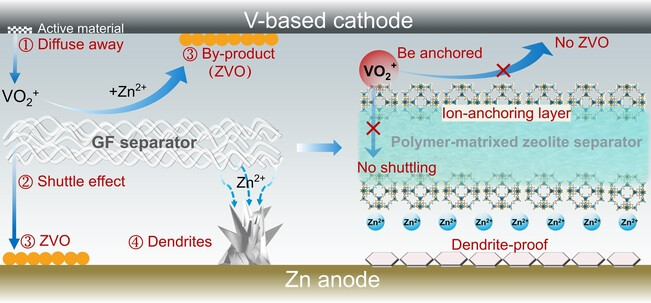
A polymer-matrixed zeolite separator (SZ) was designed to tackle the challenges posed by dissolved vanadium (V) ions and dendrite growth in the traditional Zn/V cell system. It effectively immobilizes the dissolved V species from the cathode, thereby preventing continuous dissolution and diffusion of the V-based compounds and side reactions. Simultaneously, the SZ optimizes the Zn2+ flux, achieving dendrite-proof capacity.
NLO Materials
Mg(C3O4H2)(H2O)2: A New Ultraviolet Nonlinear Optical Material Derived from KBe2BO3F2 with High Performance and Excellent Water-Resistance
- First Published: 27 November 2023
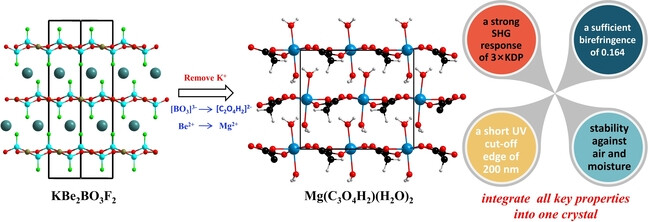
The first alkaline earth metal NLO malonic Mg(C3O4H2)(H2O)2 was synthesized by taking KBe2BO3F2 (KBBF) as parent structure. It has a unique two-dimensional NLO-favorable electroneutral [Mg(C3O4H2)3(H2O)2]∞ layer, resulting in the rare coexistence of a strong SHG response of 3×KDP (@1064 nm) and short phase-matching wavelength of 200 nm. More importantly, it has excellent water resistance, which is rare in ionic organic NLO crystals.
Immunotherapy | Very Important Paper
Click-Chemistry-Mediated Cell Membrane Glycopolymer Engineering to Potentiate Dendritic Cell Vaccines
- First Published: 29 November 2023
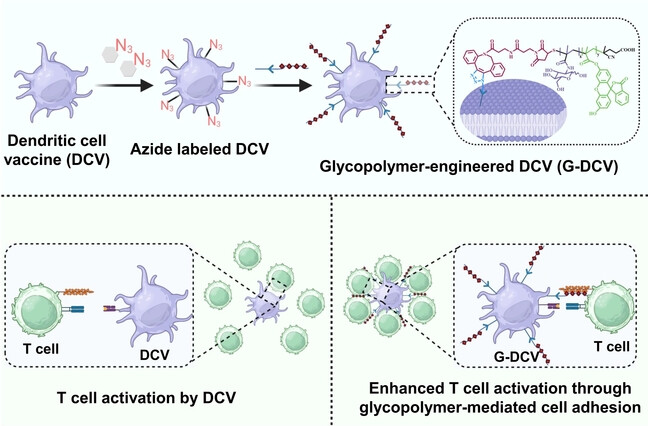
Click-chemistry-mediated cell membrane glycopolymer engineering is used to potentiate dendritic cell vaccines (DCV). The glycopolymer-engineering facilitates the adhesion of dendritic cells to T cells, thereby augmenting T cell activation and improving tumor immunotherapy, providing a new strategy for designing enhanced dendritic cell-based therapeutics.
Natural Products Synthesis
Structure-Unit-Based Total Synthesis of (−)-Sinulochmodin C
- First Published: 27 November 2023
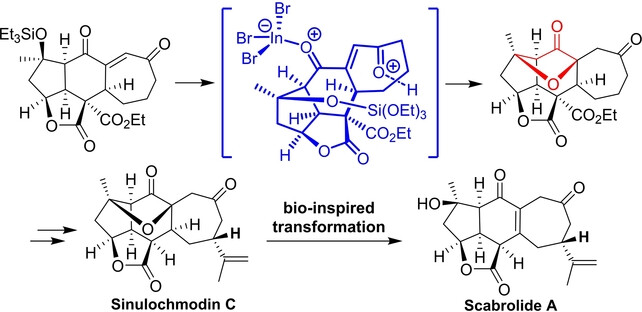
The total synthesis of two polycyclic norcembranoid diterpenoids is described. Key transformations developed for the synthesis are an intramolecular double Michael addition to construct the [7,6,5,5] tetracyclic skeleton, a Lewis acid/Brønsted acid mediated transannular oxa-Michael addition to introduce the strained ether bridge linking two quaternary carbon atoms, and bio-inspired conversion of sinulochmodin C into scabrolide A.
Host-Guest Systems
Internal Dynamics and Modular Peripheral Binding in Stimuli-Responsive 3 : 2 Host:Guest Complexes
- First Published: 27 November 2023
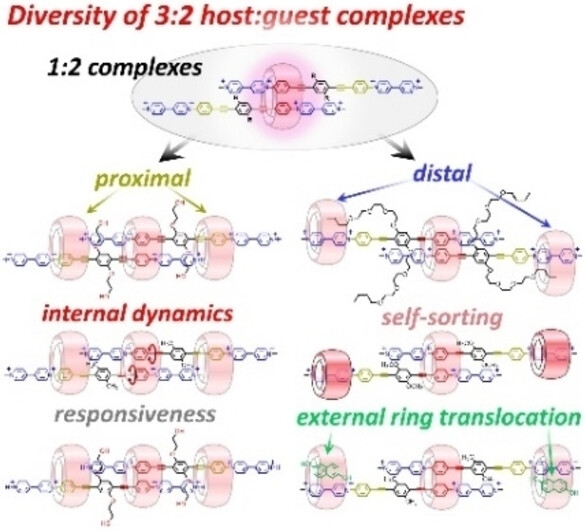
A family of versatile 3 : 2 host/guest complexes has been prepared by combining cucurbit[n]urils with symmetric, linear diviologens. These assemblies have properties typical of 1 : 1 complexes, but also show a new type of supramolecular translational-rotational coupling, peripheral complexation amenable to proximal or distal binding, and controllable peripheral ring translocation.
Nanomedicine
A Nanoinhibitor Targeting cGAS-STING Pathway to Reverse the Homeostatic Imbalance of Inflammation in Psoriasis
- First Published: 28 November 2023
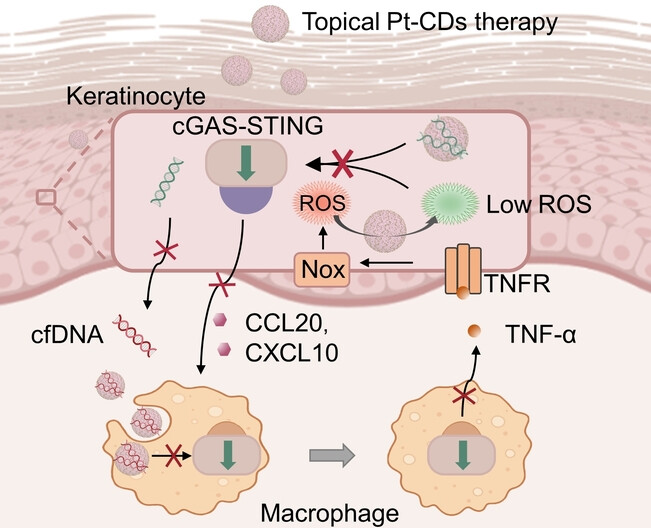
Platinum-doped positively charged carbon dots (Pt-CDs) act as nanoscavengers of cell-free DNA and reactive oxygen species, inhibiting the cGAS-STING pathway-mediated secretion of inflammatory cytokines and chemokines, which forms a positive feedback loop between macrophages and keratinocytes and amplifies the inflammatory response in psoriasis.
Electrocatalytic CO2 Reduction
Paired Electrosynthesis of Formaldehyde Derivatives from CO2 Reduction and Methanol Oxidation
- First Published: 29 November 2023
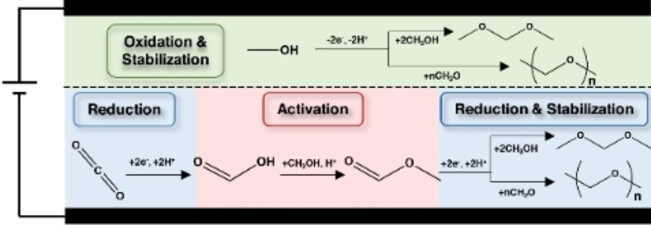
An electrochemical system for the paired electrosynthesis of formaldehyde derivatives through cathodic CO2 reduction and anodic methanol oxidation was constructed. At the cathode, the non-reducible formic acid was activated by esterification to methyl formate, which was then reduced again to form stable formaldehyde derivatives.
Polymer Chemistry | Hot Paper
A Versatile Comonomer Additive for Radically Recyclable Vinyl-derived Polymers
- First Published: 29 November 2023

Vinyl-derived polymers are notoriously challenging to recycle chemically. Herein, we report free-radical copolymerization of a cyclic allyl sulfide with several monomers, generating dynamic linkages for closed-loop cyclability. Scission via radical addition-fragmentation-transfer (AFT) dramatically reduces molar mass and preserves oligomer reactivity. Recycling by oligomer extension imparts tunable recovery molar mass and fosters upcycling.
Foldamers
Design of Chiral β-Double Helices from γ-Peptide Foldamers
- First Published: 27 November 2023
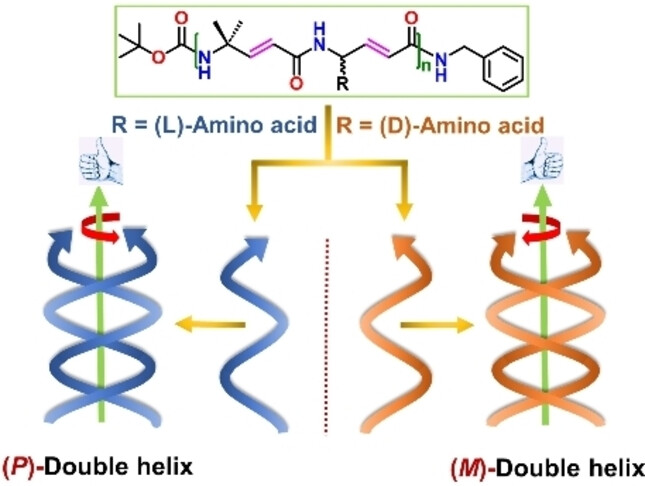
Single-crystal and solution conformations have been engineered for right-handed and left-handed β-double helices derived from a concatenation of achiral (E)-α,β-unsaturated γ-amino acids and chiral (E)-α,β-unsaturated γ-amino acids. The structural analogy of these new β-double helices with natural peptide double helices, and their ion-transport activities are also discussed.
H2O2 Production
Promoting Piezocatalytic H2O2 Production in Pure Water by Loading Metal-Organic Cage-Modified Gold Nanoparticles on Graphitic Carbon Nitride
- First Published: 20 November 2023
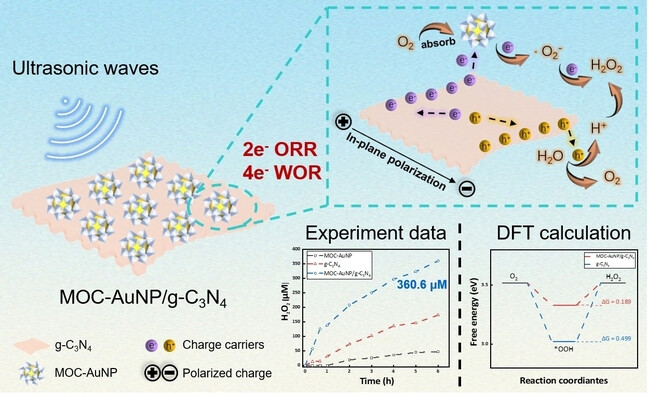
A piezocatalyst for H2O2 production gives a yield of 120.21 μmol ⋅ g−1 ⋅ h−1 in pure water and air. The metal-organic cage (MOC) component enhances substrate (O2) and product (H2O2) adsorption via host–guest interaction and hinder the rapid H2O2 decomposition. The gold nanoparticle (AuNP) component affords a strong interfacial electric field that significantly promotes the migration of electrons from Graphitic carbon nitride (g-C3N4) component for O2 reduction reaction.
Radiochemistry
Zinc-Mediated Radiosynthesis of Unprotected Fluorine-18 Labelled α-Tertiary Amides
- First Published: 27 November 2023
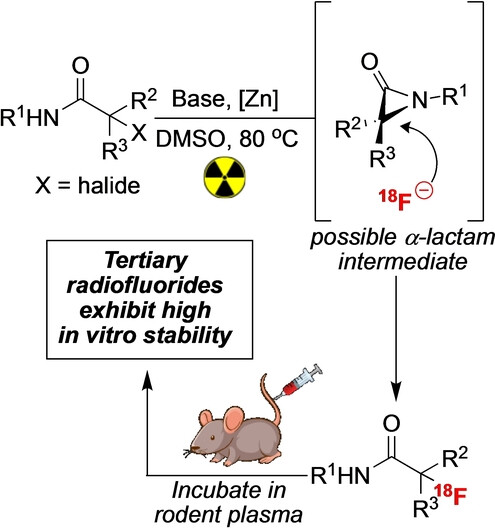
A high-yielding radiofluorination of unprotected α-tertiary haloamides is described. This method provides a new strategy for radiochemists to install fluorine-18 into sterically protected environments for positron emission tomography imaging. Preliminary mechanistic studies were leveraged to develop a novel C−H radiofluorination reaction of N-sulphonyloxyamides.
Communications
Luminescent Hybrid Halides
Unusual Thermal Quenching of Photoluminescence from an Organic–Inorganic Hybrid [MnBr4]2−-based Halide Mediated by Crystalline–Crystalline Phase Transition
- First Published: 09 October 2023
![Unusual Thermal Quenching of Photoluminescence from an Organic–Inorganic Hybrid [MnBr4]2−-based Halide Mediated by Crystalline–Crystalline Phase Transition](/cms/asset/98b9deb2-e458-4828-bae6-35b48984017d/anie202313590-toc-0001-m.jpg)
An unusual temporary photoluminescence (PL) quenching effect is herein reported for the first time, namely the thermodynamic phase transition of (DMML)2MnBr4 (DMML=N,N-dimethylmorpholinium) couples highly with PL response. Notably, the intriguing phenomenon will make an important contribution to the further in-depth exploration of responsive photoluminescence and optical encryption.
Electrocatalysis
Active Sites of Cobalt Phthalocyanine in Electrocatalytic CO2 Reduction to Methanol
- First Published: 11 October 2023
Electrochemistry | Hot Paper
Electroreductive Synthesis of Nickel(0) Complexes
- First Published: 20 November 2023
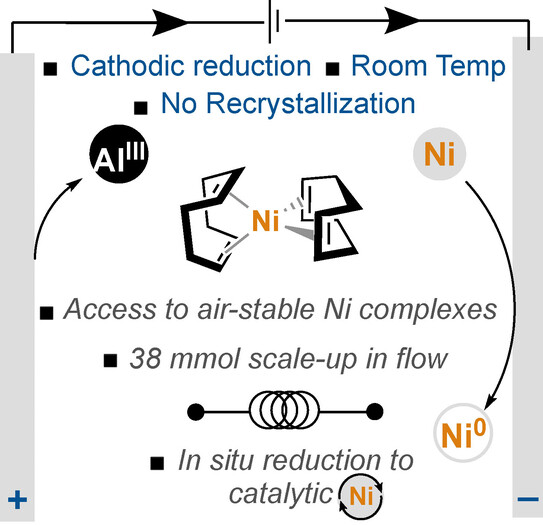
An electrochemical reduction of Ni(II) salts to make Ni(COD)2 on preparative scales is reported. The method was extended to other useful precatalyst complexes such as Ni(COD)(DQ), Ni(tBustb)3, Ni(COD)(DPPF), and Ni(PPh3)4. A 38 mmol scale-up was demonstrated with recirculating flow, and the electrochemical platform could be used to reduce a catalytic amount of Ni(II) to initiate a nickel(0)-catalyzed organic transformation.
Natural Products Synthesis
Enantioselective Total Synthesis of (+)-Incargranine A Enabled by Bifunctional Iminophosphorane and Iridium Catalysis
- First Published: 13 November 2023

The first enantioselective total synthesis of (+)-incargranine A has been completed in nine steps. An enantioselective, organocatalysed dienone desymmetrising Michael addition and an iridium-catalysed reductive cyclisation were developed to access a key hemiaminal intermediate that was used to initiate a biomimetic cascade towards the natural product.
Lithiation
α-Functionalisation of Cyclic Sulfides Enabled by Lithiation Trapping
- First Published: 20 November 2023

Lithiation and trapping at convenient temperatures (0/−10 °C) of five cyclic sulfides such as tetrahydrothiophene, tetrahydrothiopyrans and a thiomorpholine enables straightforward α-functionalisation. Trapping with a wide range of electrophiles generates more than 50 diverse α-substituted saturated sulfur heterocycles that are not easily synthesised by the currently available methods. TMEDA=N,N,N′,N′-tetramethylethylenediamine
Electrophilic Catalysis
Sulfonium Cation in the Service of π-Acid Catalysis
- First Published: 27 November 2023
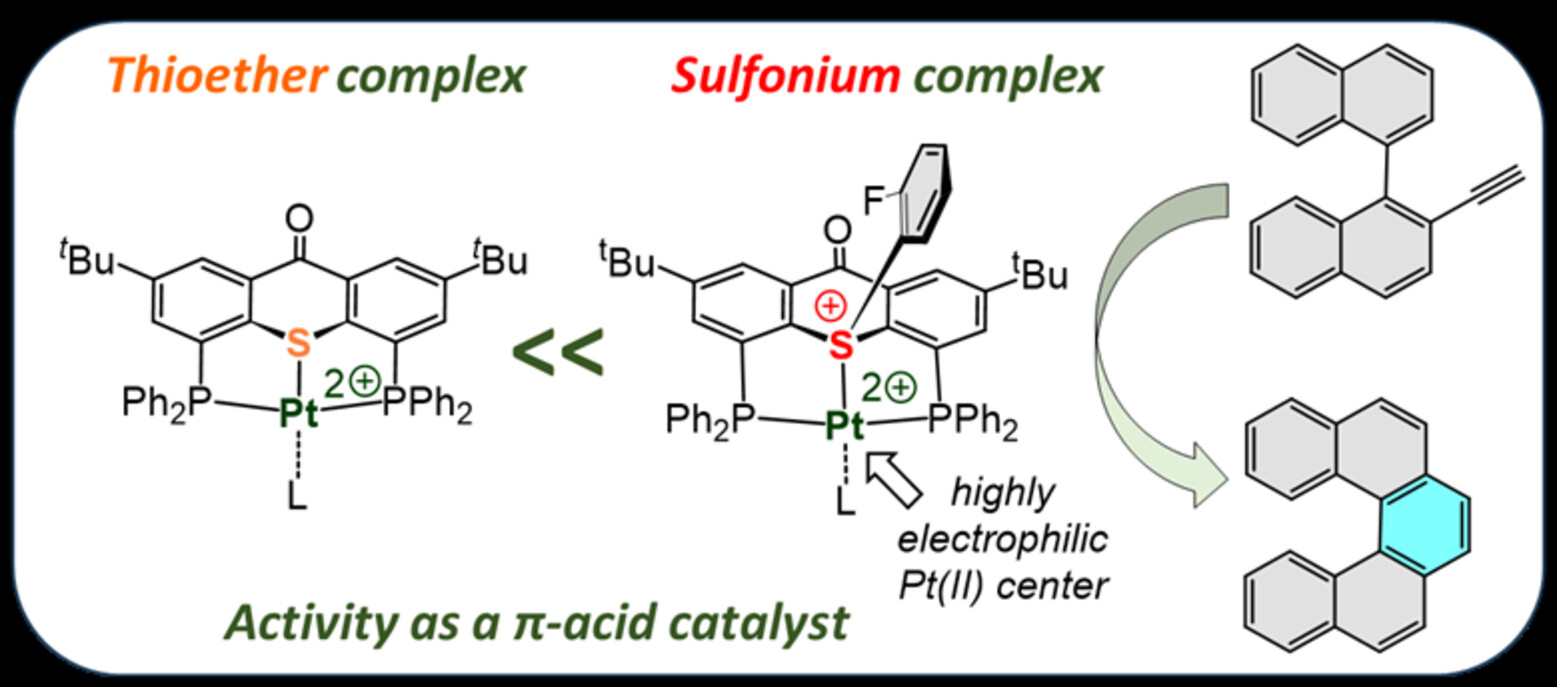
The use of a rigid PSP ligand based on sulfonium cation enables a straightforward access to a stable tris-cationic Pt(II) complex featuring a remarkably short S+−Pt2+ bond. The presence of a positively charged sulfonium moiety in this complex enhances the electrophilicity of the Pt(II) center (compared to its thioether-based analog), which leads to an excellent performance as a π-acid catalyst for alkyne cycloisomerization.
Nanographenes
Nanographene with a Nitrogen-Doped Cavity
- First Published: 27 November 2023
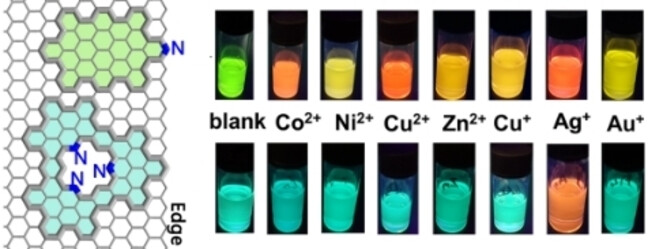
A nanographene with a tri-N-doped cavity was synthesized by photo-induced cyclization. In comparison with nitrogen-doping at the edge, this tri-N-doped holey nanographene exhibited markedly reduced basicity and selective affinity toward Ag+. This nanographene with a N-doped cavity provides a precise model for understanding the binding in the nano-confined defects of graphenic materials.
Synthetic Methods
Vitamin B12-Photocatalyzed Cyclopropanation of Electron-Deficient Alkenes Using Dichloromethane as the Methylene Source
- First Published: 28 November 2023

We report a vitamin B12-photocatalyzed strategy for the cyclopropanation of electron-deficient alkenes using dichloromethane (CH2Cl2) as the methylene source. The reaction has excellent functional group tolerance, is highly chemoselective, and the scope can be extended to other 1,1-dichloroalkanes for the preparation of D2-cyclopropyl and methyl-substituted cyclopropyl adducts, all of which are important isosteres in medical chemistry.
Cobalt Catalysis
Dual-Catalysed Intermolecular Reductive Coupling of Dienes and Ketones
- First Published: 10 November 2023




